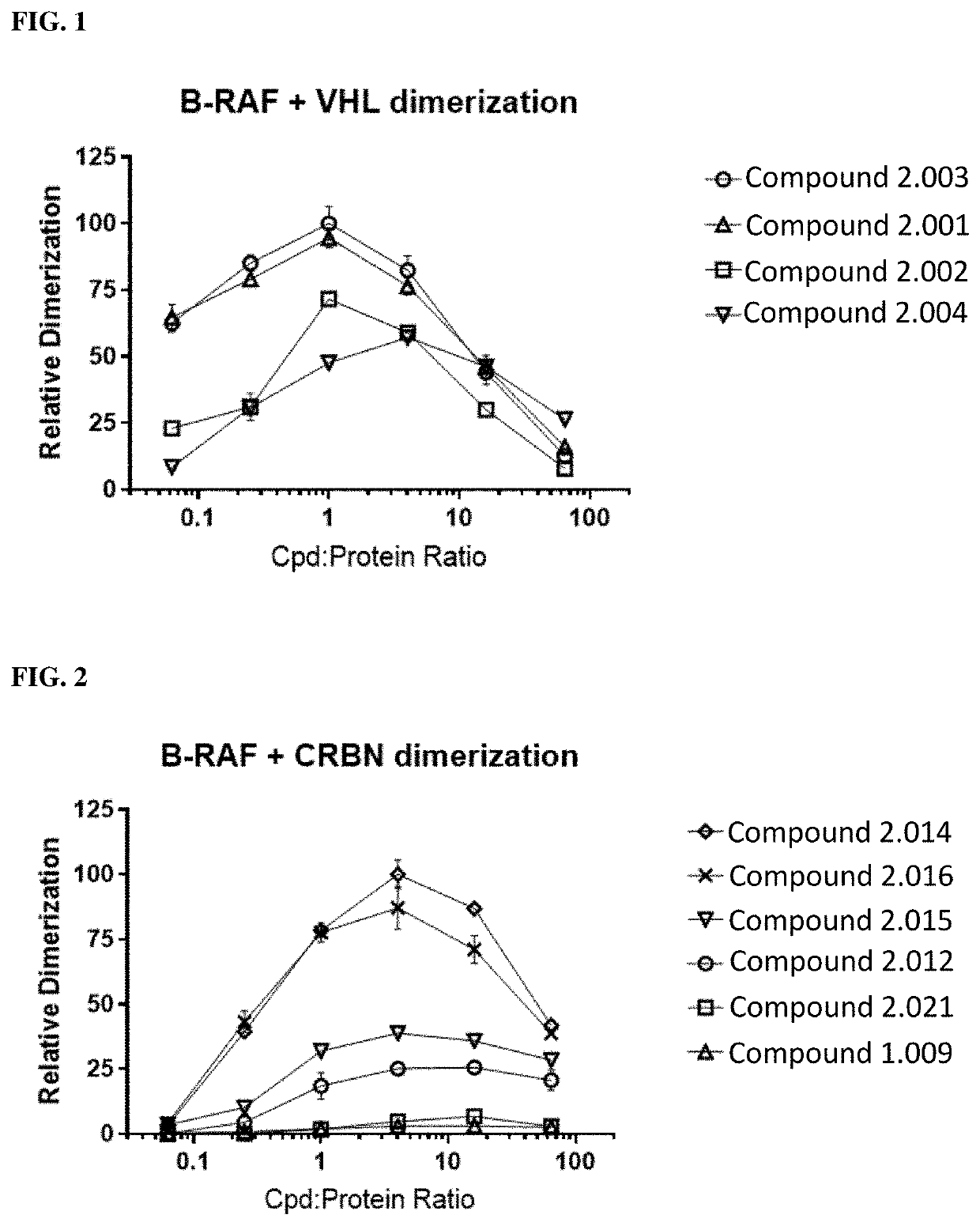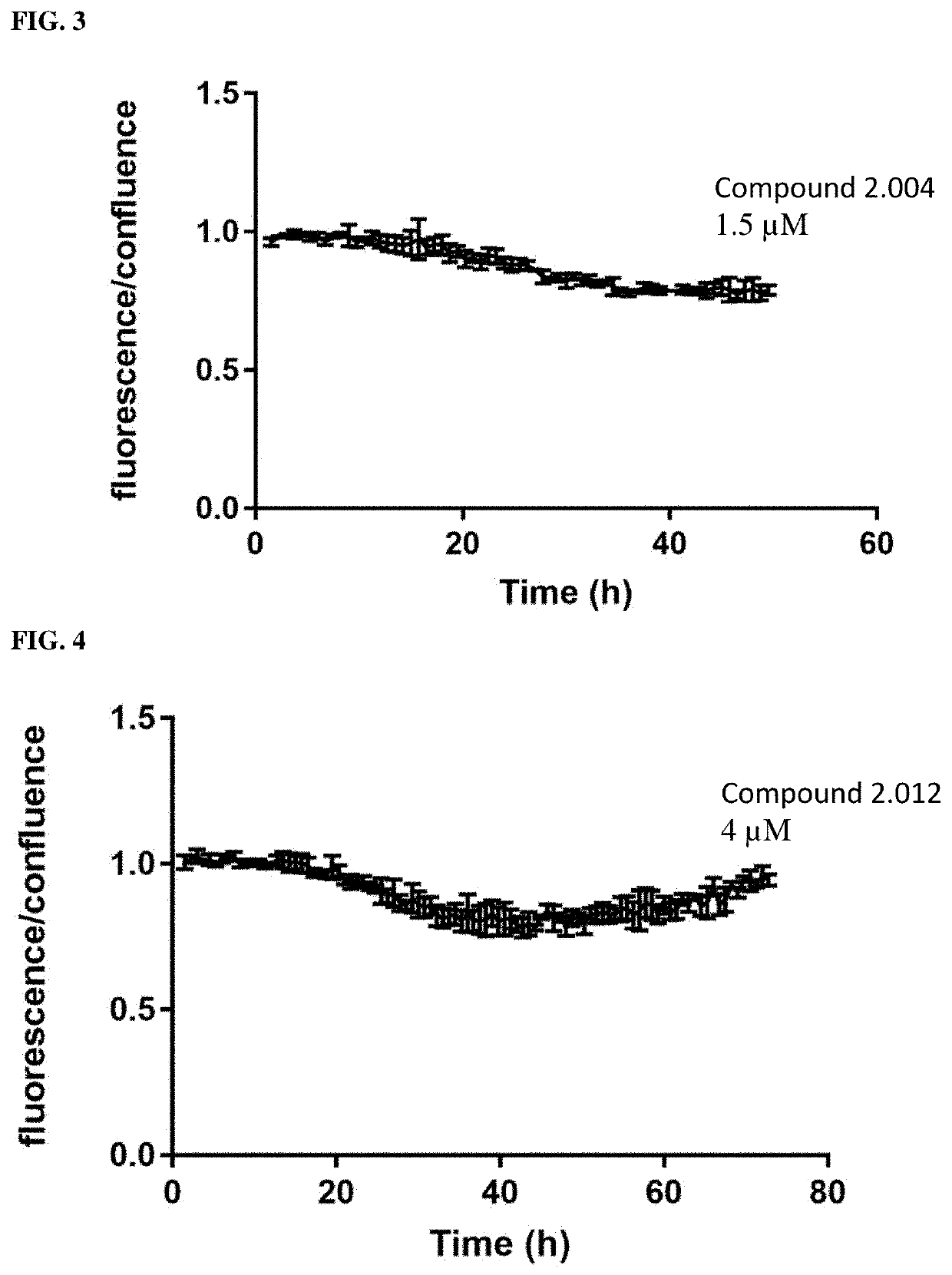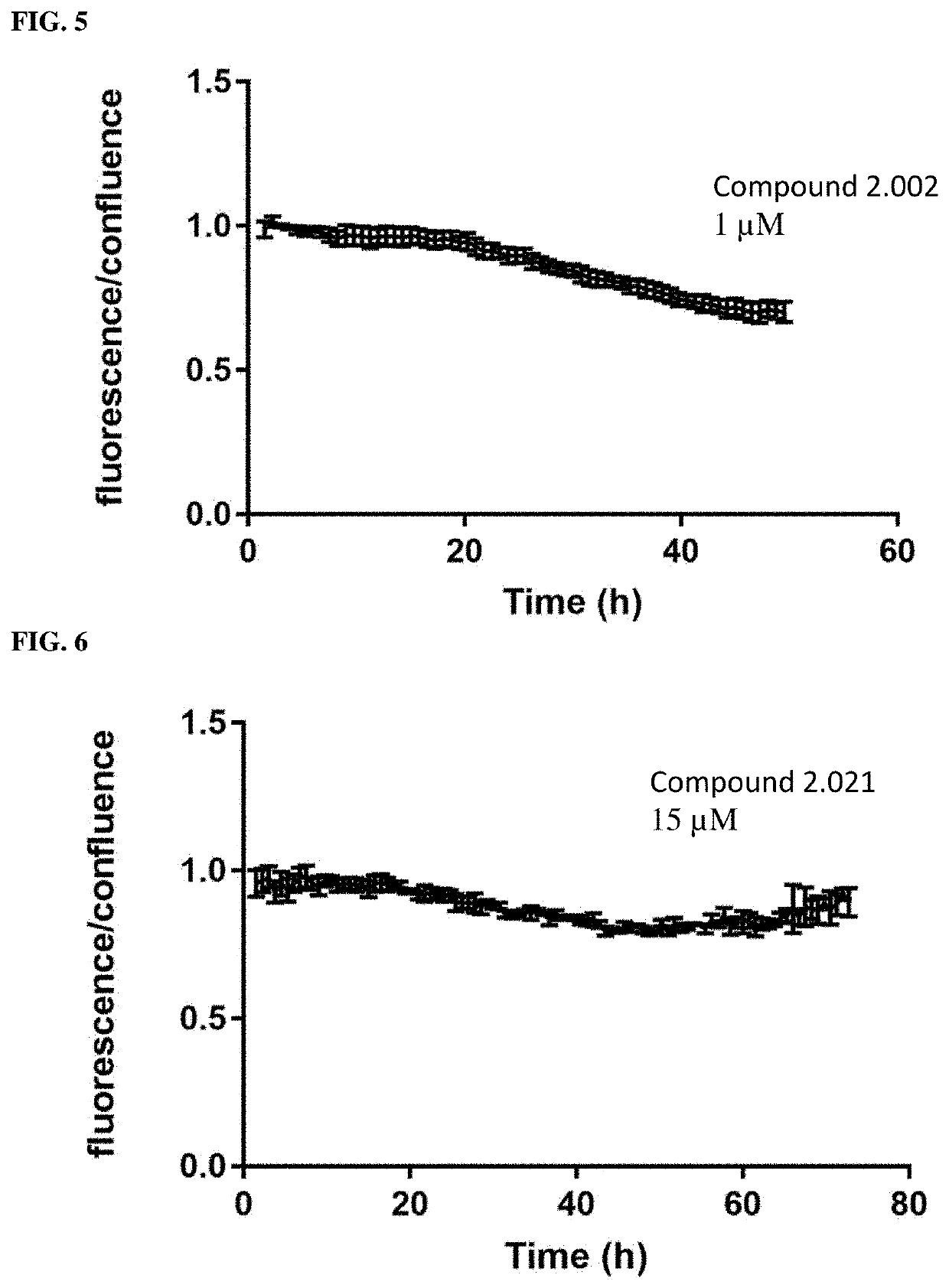RAF-degrading conjugate compounds
a conjugate compound and raf technology, applied in the field of raf-degrading conjugate compounds, can solve the problems of paradoxical activation of raf kinases and difficult drug delivery of kras
- Summary
- Abstract
- Description
- Claims
- Application Information
AI Technical Summary
Benefits of technology
Problems solved by technology
Method used
Image
Examples
example 1
of Sorafenib and Acid Precursor
[0359]
Step 01: Synthesis of ethyl 4-chloropicolinate (02)
[0360]
[0361]To a stirred solution of 4-chloropicolinic acid (15.0 g, 95.20 mmol, 1.0 equiv) in ethanol (225.0 mL, 15.0 vol. equiv) was added sulfuric acid (34.4 mL, 619 mmol, 6.5 equiv). The resulting mixture was stirred for 2 h at reflux. The completion of reaction was monitored by TLC. The solvent was removed under reduced pressure. The residue was treated with DM water (500.0 mL) and extracted with EtOAc (2×500 mL). The combined organic extract was washed with brine (200.0 mL), saturated solution of sodium bicarbonate (500.0 mL), dried over Na2SO4 and concentrated under vacuum to afford titled compound (9.84 g, 55.7%) as a light brown oily mass. 1H NMR (300 MHz, DMSO-d6) δ 8.70-8.69 (d, 1H), 8.08-8.07 (d, 1H), 7.83-7.81 (m, 1H), 4.39-4.31 (m, 2H), 1.35-1.29 (m, 3H). MS (ES+): 186.0 (M+1).
Step 02: Synthesis of ethyl 4-(4-nitrophenoxy)picolinate (04)
[0362]
[0363]To a stirred solution of 4-nitroph...
example 2
of 4-(4-(3-(4-chloro-3-(trifluoromethyl)phenyl)ureido)phenoxy)-N-(2-(2-(3-(((R)-1-((2S,4R)-4-hydroxy-2-(((S)-1-(4-(4-methylthiazol-5-yl)phenyl)ethyl)carbamoyl)pyrrolidin-1-yl)-3,3-dimethyl-1-oxobutan-2-yl)amino)-3-oxopropoxy)ethoxy)ethyl)picolinamide (Compound 1.014)
[0374]
Step 06: Synthesis of tert-butyl 3-(2-(2-(4-(4-(3-(4-chloro-3-(trifluoromethyl)phenyl)ureido)phenoxy)picolinamido)ethoxy)ethoxy)propanoate (11)
[0375]
[0376]To a stirred solution of 4-(4-(3-(4-chloro-3-(trifluoromethyl)phenyl)ureido-)phenoxy)picolinic acid (08) (200 mg, 0.44 mmol, 1.0 equiv) in DMF (5.0 mL, 25.0 vol. equiv.) were added tert-butyl 3-(2-(2-aminoethoxy)ethoxy)propanoate (10) (124 mg, 0.53 mmol, 1.2 equiv), HATU (505 mg, 1.33 mmol, 3.0 equiv) and DIPEA (68.5 mg, 0.53 mmol, 1.20 equiv). The reaction mixture was stirred for 12 h at RT. Completion of reaction was monitored by TLC. The Reaction mixture was quenched with DMW (100 mL) and extracted with EtOAc (100 mL×3). The combined organic extract was washed...
example 3
of 4-(4-(3-(4-chloro-3-(trifluoromethyl)phenyl)ureido)phenoxy)-N-(2-(2-(3-(((R)-1-((2R,4S)-4-hydroxy-2-(((S)-1-(4-(4-methylthiazol-5-yl)phenyl)ethyl)carbamoyl)pyrrolidin-1-yl)-3,3-dimethyl-1-oxobutan-2-yl)amino)-3-oxopropoxy)ethoxy)ethyl)picolinamide
[0383]
[0384]To a stirred solution of 3-(2-(2-(4-(4-(3-(4-chloro-3-(trifluoromethyl)phenyl)ureido)-phenoxy)picolinamido)ethoxy)ethoxy)propanoic acid (140 mg, 0.23 mmol, 1.0 equiv) in DMF (5.60 mL, 40.0 vol. equiv) were added (2R,4S)-1-((R)-2-amino-3,3-dimethylbutanoyl)-4-hydroxy-N—((S)-1-(4-(4-methylthiazol-5-yl)phenyl)ethyl)pyrrolidine-2-carboxamide (153 mg, 0.34 mmol, 1.0 equiv), TBTU (221 mg, 0.68 mmol, 3.0 equiv) and DIPEA (296 mg, 2.29 mmol, 10.0 equiv). The reaction mixture was stirred for 12 h at RT. Completion of reaction was monitored by TLC. The Reaction mixture was quenched with DMW (150 mL) and extracted with EtOAc (150 mL×3). The combined organic extract was washed with brine (150 mL), dried over Na2SO4 and concentrated under...
PUM
| Property | Measurement | Unit |
|---|---|---|
| temperature | aaaaa | aaaaa |
| v/v | aaaaa | aaaaa |
| pharmaceutical composition | aaaaa | aaaaa |
Abstract
Description
Claims
Application Information
 Login to View More
Login to View More - R&D
- Intellectual Property
- Life Sciences
- Materials
- Tech Scout
- Unparalleled Data Quality
- Higher Quality Content
- 60% Fewer Hallucinations
Browse by: Latest US Patents, China's latest patents, Technical Efficacy Thesaurus, Application Domain, Technology Topic, Popular Technical Reports.
© 2025 PatSnap. All rights reserved.Legal|Privacy policy|Modern Slavery Act Transparency Statement|Sitemap|About US| Contact US: help@patsnap.com



